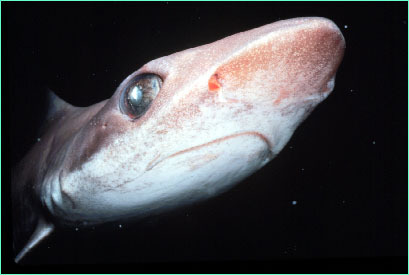#bigeye
Explore tagged Tumblr posts
Text
Daily fish fact #845
Popeye catalufa!

It is often seen swimming with squirrelfishes and cardinalfishes! They're nocturnal predators, and will hide in crevices during the day.
#fish#fish facts#fishfact#biology#zoology#fishblr#marine life#marine biology#marine animals#sea creatures#sea life#sea animals#popeye catalufa#bigeye soldierfish#bigeye
60 notes
·
View notes
Text

look up the sky thru a big filter.
0 notes
Text
Did someone call for a cute bigeye octopus moment? 👀 🐙
Like most octopuses, the bigeye loves a homey hiding place and scrumptious shrimp snacks! Our aquarists use an acrylic rod to lure the octopus out for a little tug o' war and target practice. These enrichments are all a part of a balanced diet to keep our octopuses happy and healthy. What snacks make you feel happy?
#monterey bay aquarium#inkcredible bigeye cutie#melting not just one but three hearts#is this what it feels like to crawl out of a pillow fort to grab a cookie?
4K notes
·
View notes
Text
Todays shark is...
The Bigeye Sand Tiger!

Fun Fact: The Bigeye Sand Tiger is an extremely rare species of mackerel shark in the family Odontaspididae, with a possible worldwide distribution!
111 notes
·
View notes
Text

Also throwing my animated Ventresca sprite here!! (Commission done by @cromworth!)
I'm really happy y'all love him so much....I'll be sure to post more Bigeye content cuz hes so silly hehehee...I might post his voice claim too tbh

Unanimated sprite version!
#ventresca cookie#captain bigeye cookie#cookie run#cookie run kingdom#crk#cookie run fanart#commission#he do a hearty laugh#i love old sea captains sighhh
305 notes
·
View notes
Text


To distract from the unbearable heat over here, have some summer rock soda festa content!! The crew take concerts very seriously. Trust they've got a camp set up ages before the concert even starts!


Additionally, more summer-themed doodles.
Bigeye and Red Reaper are owned by my buddy @limboraptor !! ^^
#throws this at you#pupsy has a paw pupsicle for obvious reasons.#the crew's got their own favorites#cowbell loves parfait's songs#goldie is a black lemonade fan#shacka rocka is adored by the boxers#eel's there for all of them#BUT hes shamelessly biased towards rockstar#hot season prompt will continue#anyway enough rambling in tags#cookie run#cookie run kingdom#crk#cookie run oc#crk oc#fan cookie#cookie run ovenbreak#my art#banana eel cookie#bastard eel cookie#the banana crew#captain red reaper#pepperpeel#captain bigeye cookie#ventresca cookie#giant otter cookie#otter pup cookie#otto#pupsy#goldenback shrimp cookie
271 notes
·
View notes
Text
Literally Silco when he looks all pathetic

#arcane#silco#arcane silco#silco arcane#silfish#silco fish#short bigeye#short bigeye fish#silco is adorable
39 notes
·
View notes
Text

Bigeye Houndshark
Habitat & Distribution
Found only in the Indian Ocean, particularly around the Red Sea, Gulf of Oman, the coast of India and the Bay of Bengal
Lives at depths of 110 to 2,200 m (360 to 7,220 ft)
Physical Distribution
Weight: 0.39 kg (0.85 lbs) on average
Length: 50 cm (19.6 in) on average
Bigeye sharks have long bodies and a pointed nose; for their size, their eyes are extremely large
Most invididuals are brown with a light underbelly
Behaviour
Bigeye sharks are bottom-dwellers, where they feed primarily on bony fishes, cephalopods, and crustaceans
They are likely prey of other, larger sharks
Like most sharks, they are solitary hunters and only seek out other individuals to mate
Key Advantages
The bigeye shark's large eyes allow it to see in extremely low-light conditions
See where they stand in the May Mammal Madness Tournament here!
Photo by Jeff Rotman
134 notes
·
View notes
Text

Mermaid's Ballroom - Valka Castle
Endless Ocean: Blue World, Nintendo Wii
I FINALLY GOT SOME VALKA CASTLE PHOTOS!!! :D
my emulator decided to implode my gui + cursor removal cheat, which is. kind of important for my screenshots. so i had to do it the old fashioned way
#anything for you all though <3#endless ocean#endlessocean#endless ocean 2#endless ocean blue world#endlessoceanphotos#nintendo wii#wii#valka castle#crescent tail bigeye#luna lionfish
13 notes
·
View notes
Note
may i request a humble oocean fish,,,,,,,,,,,,

You get a Bigeye Trevally
Caranx sexfasciatus
44 notes
·
View notes
Note
I saw the tuna post. Genuine inquiry: can you please share some of your favorite tuna facts?
Gladly! I already shared some of my favourites, but I can describe them in further detail.
There are 15 species in the Thunnini tribe (the tunas), split between five genera. Most tunas, eight species, are in the genus Thunnus, which is also called “true tunas”! The biggest of them all, Atlantic bluefin tuna, has been reported to reach a maximum size of 4.6 m/15 feet and 900 kg/~2 000 lbs. Read that again. Really take it in. The largest tuna ever measured and weighed were longer than two Shaquille O’Neals stacked on top of one another, and weighed over six Shaquille O’Neals! (I hear people like hearing measurements in Shaquille O'Neals.)
Naturally tuna don't always reach such gargantuan sizes, the average Atlantic and Pacific bluefins are around the two meter/~6.5 feet length range. The average southern bluefin, yellowfin, bigeye tuna and albacore are all around one to two meters long (~3 feet to ~6.5 feet), and one of the more common tuna species to be eaten (especially canned), skipjack tuna, is 80 cm/31 inches long on average. Still, that's not tiny! It's twice as big as your average largemouth bass or pike.
Like I described in my original tuna post, everything about tunas is evolved for speed. Their lunate tail has little surface area to minimise drag in the water. Near their tail they have stabilising horizontal keels. Their dorsal fin has a special groove in the body where it can be tucked completely hidden. Tunas can also tuck in their pelvic fins when they swim at great speeds, less fins sticking out meaning more hydrodynamic shape! Of course though, fins are great for controlling where you're swimming and when you're doing sharp turns: to keep their turns as hard as possible, it has been found that (at least Pacific bluefin and yellowfin) tunas actually use their lymphatic system to pump their dorsal and anal fins full of fluid! The fluid forces the fins into an erect and extremely stiff position that gives the tunas plenty support to stop in their tracks in the water and turn around. A wonderful LiveScience article says it best, making turns with stiff fins versus floppy fins is like "the difference between trying to turn a canoe with a pool noodle versus a sturdy wooden oar."
Tunas have red flesh unlike the white flesh of most fish, and that's because they're simply jam packed full of myoglobin. Swimming continuously and especially swimming at lightning speeds for even a small amount of time takes up a lot of oxygen, and the tuna's blood can bind a lot of it! Also, most interestingly, the circulation system of tunas is set up in such a way that heat produced from their metabolism is retained to heat the body in what is called countercurrent heat exchange. I'll explain this in a lengthier way.
Usually, when blood travels to the peripheries of a fish's body -- even if it was warmed by the fish's metabolic processes -- tends to cool down as it moves closer and closer to the outside world, i.e. the water surrounding the fish. When the blood travels back to the heart and the organs, it's still that cool temperature, for a fish do not keep a constant consistent body temperature like mammals or birds can. This is made no better with the gills, as they are in constant contact with water and the blood of a fish is therefore also constantly in contact with the cooling forces of the water. However! The way that tunas do it is that as the blood vessels travelling further away from the heart are subjected more and more to the cooling forces of the outside world, they are closely intertwined with blood vessels that are going from the periphery back into the center of the body. What happens then is that as the cool blood comes back into the body, it is essentially surrounded by blood that is warmer and warmer the deeper inside it goes. This transfers the heat to the blood vessels that go inside the body, warming the blood overall and allowing tunas to keep their body temperature significantly higher than the surrounding environment! Here's a picture that shows how that works. Fun fact: the net of veins that warms the tuna is called a rete mirabile, a "wonderful net".

Tunas use this tactic to warm their swimming muscles, their brains and their eyes: tunas are visual predators that need to see well, efficiently process what they see, have quick reaction times and fast reflexes, and of course, swim extremely fast. It works rather well for them, as they can maintain a body temperature several degrees higher than the surrounding water!
All these things combined make tunas a fierce oceanic predator! The yellowfin tuna is the fastest and can reportedly swim at a top speed of 75 km/h or 47 mph, but the others aren't bad either, the Atlantic bluefin can swim with a max speed of 53 km/h or 33 mph for example! Estimates for speeds vary a lot though, some max speeds are easily overestimated if there’s no way to accurately measure speed. For one, the NOAA Fisheries site claims that the albacore tuna can reach speeds of over 80 km/h or 50 mph, but then clearly they would be the fastest tunas, even though it’s often agreed that title goes to the yellowfin….? Mmm… Just, they’re fast. They’re very really fast.
Tunas like to swim in schools, sometimes comprised of multiple tuna species. All together they are the terror of fish schools in the temperate and warm seas of the world >:) They tend to stick to surface waters, but some tunas can dive even up to a kilometer deep (3 280 feet), namely Atlantic bluefins! Many species make great migrations between their breeding grounds and where their food goes, they can swim kilometers upon kilometers nonstop without ever tiring. "Nonstop" isn't even hyperbole in this case by the way, tuna cannot stop swimming as their oxygen intake relies on ram ventilation similar to some species of sharks. If they stop, they cannot get water on their gills and suffocate as a result. It's not really known if and how tunas rest as a result, because they are always on the go. Also I don't really know where else to say this, but the keels of tunas actually have a lateral line canal that differs from the rest of the body's lateral line, which might help tunas sense things like water flow and pressure near the tail. The more you know!
I can't leave these facts here without showing some proper tuna pictures that showcase their size. Here’s a 191 kg/422 lb Atlantic bluefin tuna!

Sadly out of the water, but... look at that. Tiger of the ocean, that is.
#tuna#bluefin tuna#atlantic bluefin tuna#pacific bluefin tuna#yellowfin tuna#bigeye tuna#albacore#skipjack tuna#skipjack#southern bluefin tuna#tunafish#fish facts#fishfact#asks#mushroommanchanterelle#fish
79 notes
·
View notes
Text

I was away last night, unexpectedly. Her majesty insists that she did NOT miss me.
26 notes
·
View notes
Text

summer is close guys
#cookie run#cookie run kingdom#cookie run oc#shipovnik oc's#crk#red crayfish cookie#absinthe cookie#ventresca cookie#captain bigeye cookie
85 notes
·
View notes
Text

Well, if it ain't Captain Ventresca himself!
A commission for @limboraptor :)c
#ventresca cookie#captain bigeye cookie#cookie run#cookie run kingdom#cookie run oc#crk#my art#crk oc#art commisions
130 notes
·
View notes
Text



Had some fun drawing on whiteboard with a couple of friends. Happy Easter maybe?? I dont know if the timezones fit yet, but hope you all are enjoying the eggs. The Otter fam sure is!
Ventresca (yellow n blue boy) is owned by @limboraptor <3 because the entire family gotta celebrate yaknow.
#cookie run#cookie run kingdom#crk#cookie run oc#crk oc#cookie run fanart#my art#crk fanart#easter#happy easter#bunny onesie#egg hunt#ventresca cookie#captain bigeye cookie#otter pup cookie#giant otter cookie#otto#pupsy#doodle
86 notes
·
View notes
Text
Themes for Sea Shanty Cookies tags
Aka being autistic about other people oc’s. And what I mean by themes, I mean what music is playing whenever their on screen
Albatross Cookie -Scarlemagne’s Waltz (Kipo). oc belongs to @cosmicwhoreo
Giant Squid Cookie - Worse than death (Nine Sols) Oc belongs to @80bitesofsweets
Black Lava Cookie - Just one more time (Kipo) Oc belongs to @rawdough
Red Crayfish Cookie - Jamack Theme (Kipo) Oc belongs to @shipshinaa
Banana Eel Cookie - Newton Wolves Rap (Kipo) Oc belongs to @cornkernelle
Ambrosia Cookie - Cinnamon (Kipo) ocs belongs to @rawdough
Giant Otter and Otter Pup Cookie Yumyan Hammermeow (Kipo) ocs belongs to @cornkernelle
Ventescra Cookie - Human in Capes (Kipo) Oc belongs to @limboraptor
Ok some ocs I’ll probably get to write later or draw on paper
Puffin Cookie -Relaxing and Stressful (Bee and Puppycat) belongs to me
Blue-ring Cookie - Instrumental Dismemberment Song, meaning just the music, no words.
REMEMBER THIS IS ALL MY PERSONAL HEADCANNONS
#albatross cookie#giant squid cookie#black lava cookie#banana eel cookie#Red crayfish cookie#giant otter cookie#Captain bigeye cookie#Ambrosia cookie#Otter pup vookie#Sea shanty cookie tag#blue-ring cookie#This is a slot of tags for my first post#And the first post is not writing just headcannons#I’ll soon get into writing#Puffin Cookie
16 notes
·
View notes